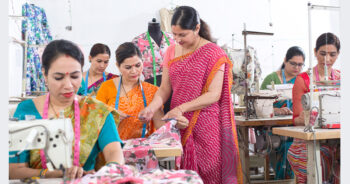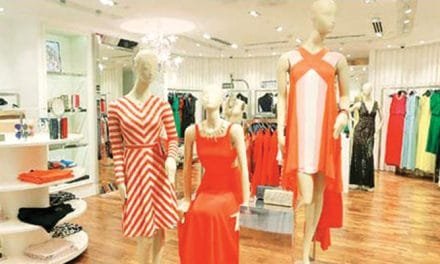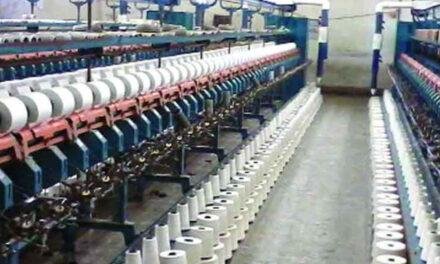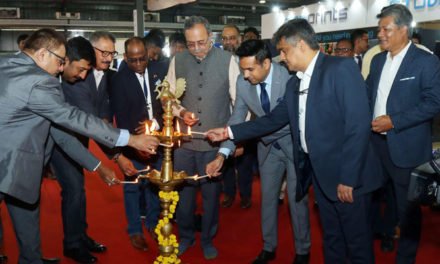 As India goes to the polls for its general election, the country’s apparel industry foresees a continuity of policies with more free trade agreements. India expects to see a new (or more likely renewed) government taking charge after its election in early June and its apparel sector remains optimistic that its investment promotion schemes will be strengthened.
As India goes to the polls for its general election, the country’s apparel industry foresees a continuity of policies with more free trade agreements. India expects to see a new (or more likely renewed) government taking charge after its election in early June and its apparel sector remains optimistic that its investment promotion schemes will be strengthened.
In the past, the industry has been supported by schemes such as the PM Mega Integrated Textile Region and Apparel Parks (PM MITRA) programme (PM standing for Prime Minister); the Production Linked Incentive (PLI) Scheme and the Scheme for Capacity Building in the Textile Sector (SAMARTH).
Impact of India election on apparel sector
“These schemes will continue,” Rahul Mehta, Chief Mentor of the Clothing Manufacturers Association of India (CMAI), told. He hoped the scheme would enable smaller businesses to grow: “Most of the Indian apparel manufacturing units are small and are not able to achieve economies of scale,” he told. The current smaller size of most Indian apparel manufacturers also restricts them from adopting latest technologies which are mostly made for large scale manufacturers, said Mehta.
PM MITRA is intended to support investment in the apparel and textile industry by building industrial parks utilising modern infrastructure with a budget of Indian Rupees INR44.45 bn ($531mn) until 2028. PLI, on the other hand, promotes production of fabrics and apparel made of synthetic fibres along with technical textiles by providing financial benefits to new companies.
The Indian garment industry has been pushing for a second generation of the PLI scheme, looking for an investment threshold much lower than the current INR1bn ($12mn) that must be injected to secure later government support, said Mithileshwar Thakur, Secretary General of India’s Apparel Export Promotion Council.
Prashant Agarwal, Joint Managing Director of consultancy firm Wazir Advisors, in Gurgaon, near Delhi, predicted that this change would occur, saying a new government would probably launch a PLI-2 scheme in its first parliamentary session, where the investment threshold would be INR150m ($1.8mn) and without any condition of using manmade fibre (a current condition for securing aid from PLI-1. “The government is promoting large scale investments to create a kind of capacity that the international buyers are looking for,” he told.
In its election manifesto, released on 14 April, the ruling BJP (Bharatiya Janata Party) said: “Our government has taken a major step in expanding of ‘technology centres’,” which “will expose MSMEs [micro, small and medium-sized enterprises] to artificial intelligence, robotics, internet of things, virtual reality, blockchain technology and ‘Zero Defect Zero Effect’ practices”, that minimise returns and environmental impact. By the end of 2024 there will be more than 150 of such technology centres that would help in mentoring, skilling and prototyping MSMEs, it said.
Such measures may also compensate for any constraints in providing financial benefits to the industry. “There is limited scope of fiscal incentives and therefore, we are looking at more of procedural simplification, digitisation, increasing ease of doing business and all that which lead to reduction in transaction cost and time,” Chandrima Chatterjee, Secretary General of the Confederation of Indian Textile Industry told. Furthermore, according to Chatterjee, in the last two to three years the gap between India and its competitors in the garment exports market has widened as the exports of Bangladesh and Vietnam have been growing at a faster rate. To increase its competitiveness, India’s apparel industry is eagerly awaiting planned free trade agreements (FTA) with the UK and the European Union, she said.
According to Agarwal, the government has set a 100-day target in its new term to close the FTA with the UK. This will provide Indian garment exports with about a 9% duty advantage resulting in a projected increase in sales from $1.5bn in 2023 to more than $3.5bn, he said.
The popularity of Prime Minister Narendra Modi is expected to provide the BJP party government a third term, but with that mandate will come challenges, such as reducing unemployment, which was at 8 percent in February, according to the Centre for Monitoring Indian Economy (CIME): “We expect that any government that comes in, will appreciate that textiles and apparel are the largest employment providers, specially to women,” said Mehta.
In March apparel industry experts revealed India is integrating its textile and apparel industry more closely to achieve faster growth and become a reliable alternative to China and other Asian fashion sourcing hubs.





















